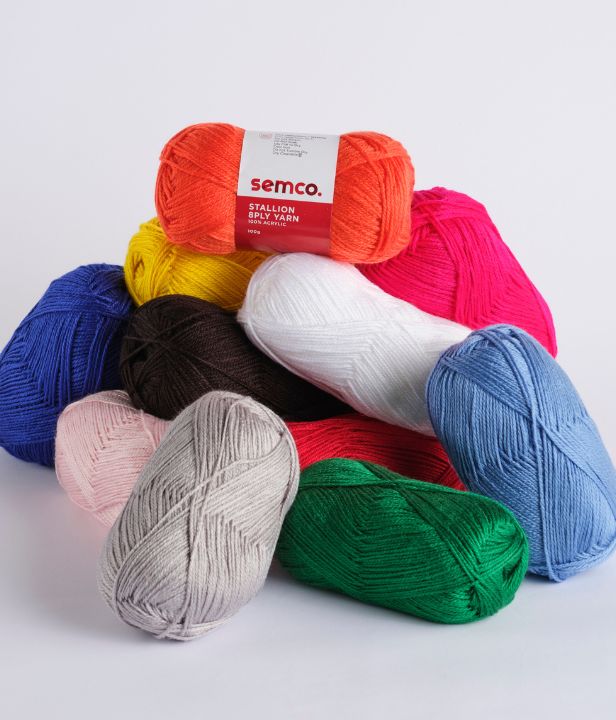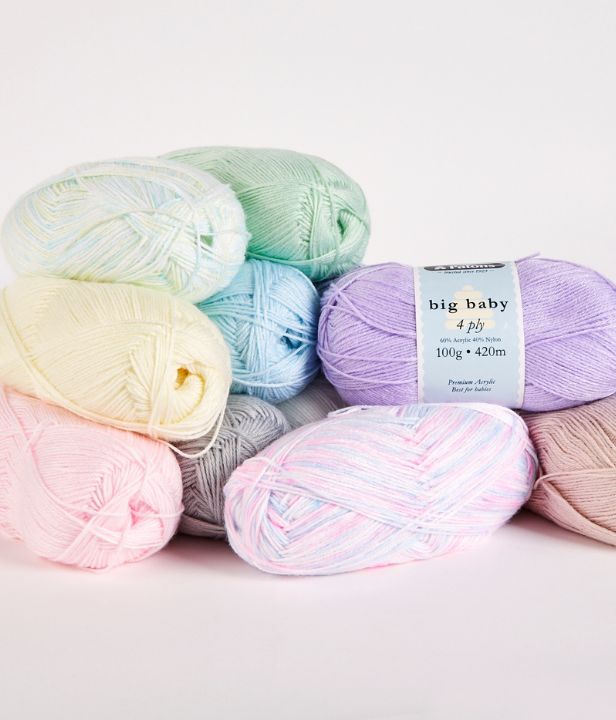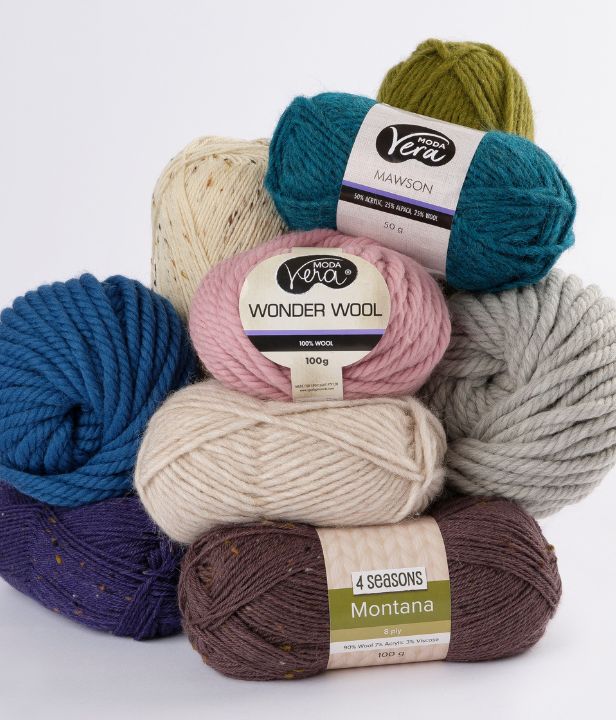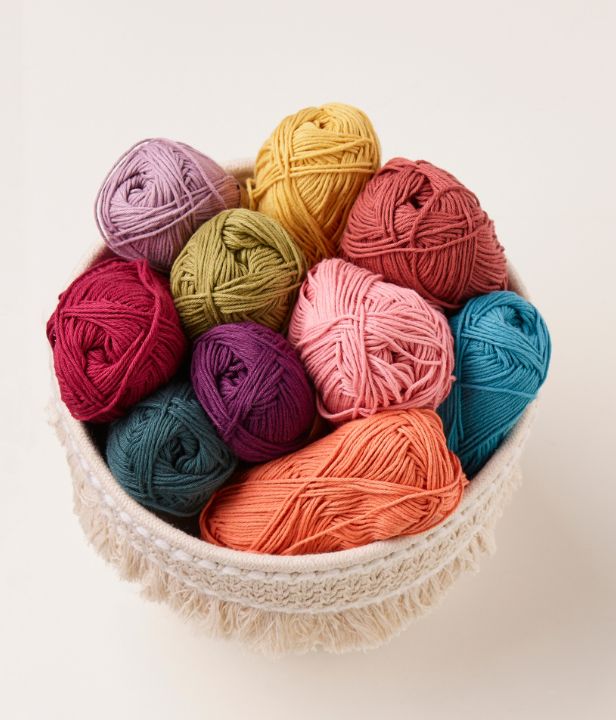 | ||
| Your browser is not supported. | ||
|
Please browse our site using any of the following options:
| ||
Choosing The Right Yarn For Your Project
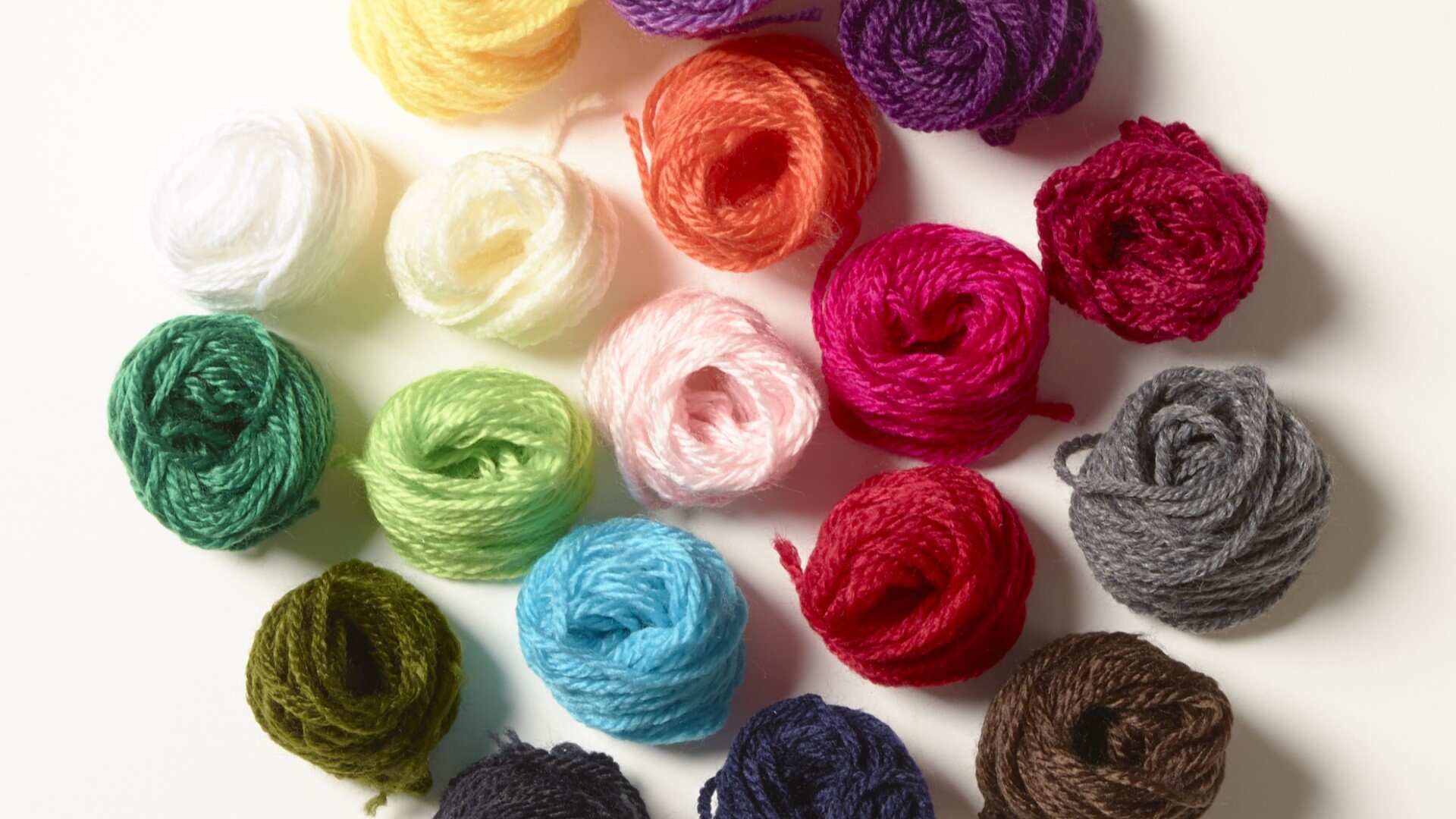
When it comes to yarn, you'll find the shelves at Spotlight are practically overflowing with skeins and cakes in a rainbow of beautiful colours. Yarn can be fluffy, smooth, shiny, metallic, chunky or delicate, not to mention variations in fibre type, weight and ply - with all these differing characteristics, how do you choose the right yarn for your project?
This guide will cover everything you need to know about the yarn used for knitting and crocheting - we'll go over the many different types of yarn you can find, and then answer some frequently asked questions to tie off any lasting queries you may still have. This is your ultimate guide to yarn at Spotlight!
Quick Links
- How To Read A Yarn Label
- Types Of Yarn Fibres
- Yarn Ply And Texture
- Yarn Size And Weight
- Yarn Colours
- FAQs
How TO Read A Yarn Label
You can actually learn a whole lot about any ball of yarn you pick up simply by reading the label, but for a beginner these labels can seem a little tricky to decipher.
Here's how to crack the code:
- Literal weight. This refers to the actual weight of the ball or skein. It will usually be presented in both ounces and grams.
- Length or 'yardage'. The length of yarn in the ball or skein. This will usually be given in both yards and metres.
- Fibre content. This tells you what proportion of the yarn is made from each type of fibre, for example 80% acrylic and 20% wool. There is more information about yarn fibres below.
- Weight. This refers to the thickness or diameter of the yarn, and the system for measuring this will depend on the country the yarn is from. The section below on 'yarn size and weight' will explain how this works.
- Needle and hook gauge. This is a recommendation for the ideal size of knitting needle or hook to use with the yarn. It will tell you what size of needle you will require in order to knit or crochet a standard-size swatch.
- Colour name and number. Many yarns will have a colour name, as well as a number associated with that name. Different manufacturers will have their own systems for how they name their colours.
- Dye lot number. there will almost always be slight variations in colour between batches of dyed yarn. If you are working on a larger project and you want to ensure the colour is consistent throughout, it's worth making sure that each ball of yarn you buy is from the same dye lot.
- Washing symbols. These give all the information you need in order to care for your yarn appropriately. These will include symbols for dry cleaning, water temperature, ironing and if the yarn can be tumble dried.
So now that you've worked out what all of those details mean, let's look at some of the main variables that you'll want to consider when selecting the right yarn for your project.
The four main ways that yarn can vary are in:
- Fibre
- Ply and texture
- Weight
- Colour
Understanding these qualities can help you choose the right yarn for whichever project you want to make.
Types Of Yarn Fibres
The fibre is the material from which a yarn is made. These can be split into three main categories: natural, synthetic, and blended.
Natural
These are any yarns made from naturally occurring fibres. They fall into two further subcategories:
- Animals, such as wool, alpaca, angora, silk, etc.
- Animal fibres are prized for their warmth and softness, though these qualities vary significantly depending on the animal they come from and how they are spun.
- The most commonly used animal fibre is sheep's wool, but cashmere, angora, and silk are also widely used. Curious knitters can even find yarns spun from more unusual sources, such as possum and camel.
- Plant, including bamboo, cotton, rayon, linen, and hemp.
- Plant fibres are generally the most breathable, so they're great for making garments intended to be worn in warmer seasons.
- That same breathability makes these fibres ideal for knitting blankets and baby clothes.
- As they're not produced from animal sources, plant fibres are vegan-friendly.
- Allergies to animal fibres are quite common, so plant fibres are a good hypoallergenic alternative.
- Due to their sustainable farming and cultivation practices, bamboo and hemp are the most environmentally friendly yarn choices.
Synthetic
These are any fibres that are artificially produced. They include acrylic, nylon, and polyester. While they vary in composition, they are all essentially different forms of plastic. This may sound like a drawback, but synthetic fibres have some very desirable qualities.
- They stand up well to washing and don't shrink or fade as easily as natural fibres.
- They're inexpensive and widely available.
- They're easy to dye so can come in virtually any colour.
- As they don't contain animal fibres, they're vegan-friendly, and suitable for people with animal allergies. Synthetic materials are often used to make baby yarn for this reason.
Blended
Yarn manufacturers will often blend different fibres together in order to combine their different qualities. Blends can be:
- Natural/synthetic: For example, combining the softness and breathability of cotton with the wrinkle-free look and stretch of polyester.
- Synthetic/synthetic: For example, combining the soft, silky feel of rayon with the stretchiness and strength of nylon.
- Natural/natural: For example, combining the fluffy warmth of wool with the softness and strength of cotton.
Different combinations of fibre will affect a yarn's price, texture, washability, durability, colourfastness and warmth.
Attribute | Use | Don't Use |
Softness | Animal, plant | Synthetic |
Warmth | Animal | Synthetic |
Durability | Synthetic | - |
Sustainability | Plant | Synthetic |
Affordability | Synthetic | Pure animal fibres |
Hypoallergenic | Synthetic, plant | Animal |
Vegan | Synthetic, plant | Animal |
Shop The Yarn Range
Yarn Ply And Texture
Regardless of what they are made of, fibres have to be spun to make yarn. This is the process by which the fibres are stretched and pulled so they run parallel to each other, and twisted into long strands.
Plied yarn
One strand of spun yarn is called a ply. The ply count of a yarn refers to the number of plies that have been twisted together to form the yarn.
Note: ply can also refer to a yarn's weight, which you can read about below.
Single ply
This yarn tends to be less tightly spun since it's only been through that spinning and twisting process once. This results in some unique qualities:
- It felts easily.
- Has a puffy look, often referred to as a 'bloom', when knitted or crocheted.
- Can pill more easily as the individual fibres are more readily pulled away from the yarn.
- Generally produces pieces with a softer look and feel than other yarns.
- When made with fluffier fibres will often have a 'halo' effect.
- Can be weaker than other yarn, although this can be countered by knitting or crocheting with a tighter gauge.
Multi-ply
Most yarn is made of multiple plies twisted around each other into a single strand. Plied yarns:
- Gain strength with each additional ply.
- Have increased density with increased ply count.
- Usually show greater stitch definition than single-ply yarns.
Cable ply
This type of yarn is made with multiple strands of already plied yarn. For example, taking two strands of two-ply yarn and then plying them with each other to make a four-ply yarn. Cabled yarns:
- Are very hard-wearing, and particularly useful for projects that are going to get a lot of use like socks, or the cuffs of cardigans and sweaters.
- Are often described as 'bouncy' or 'squashy' because of the way the plies of yarn are spun together.
Unusual yarn textures
You can find all manner of fun and interesting textured yarn if you're looking for something a bit different to knit with. For example:
- Boucle: Where at least two plies are spun together at different tensions to create loops along the length of the finished yarn.
- Eyelash: Looks like a long thread with many long strands sticking out at right angles from it, just like eyelashes.
- Chenille: Short lengths of yarn called 'pile' are twisted between two 'core yarns' so that they stick out at right angles creating a soft and fluffy finished product.
- Metallic: Some yarns can be spun with metallic filaments running through them to add sparkle to the finished fabric.
- Brushed: Our brushed yarn has had some of its fibres pulled away from the plies, giving it a soft, cloudy look
Other yarns have had additional elements like sequins, beads, or even short lengths of ribbon added to them during the spinning process, which can create interesting visual and textural effects.
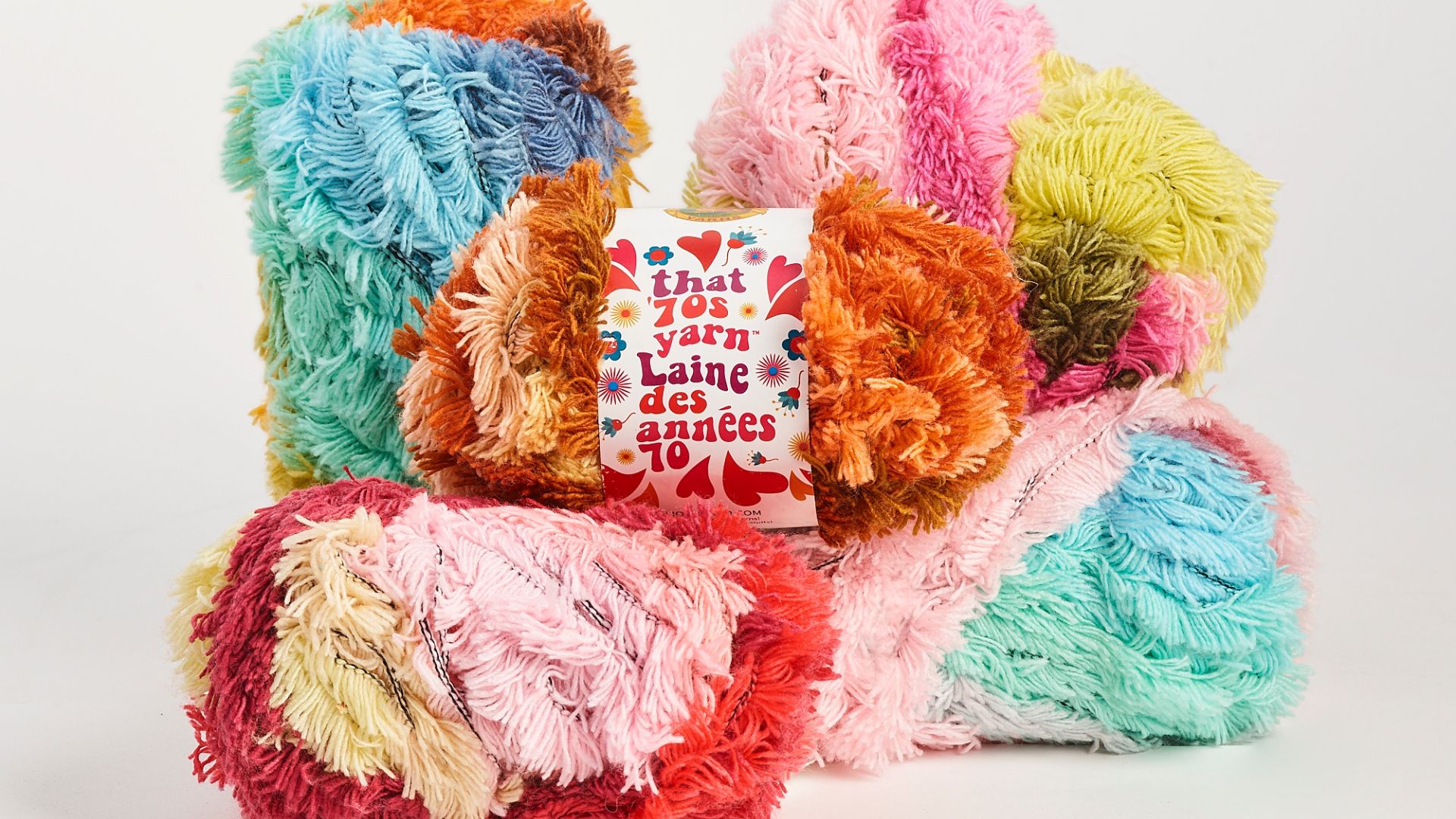
Yarn Size And Weight
A yarn's weight doesn't actually refer to how much it weighs in grams. Instead, it denotes the thickness or the diameter of the yarn. This is important because yarn can be spun into thick or thin plies and plied in many ways, so it's not always informative to measure the size of a yarn based simply on the number of plies it's comprised of.
That said, as with knitting needles and crochet hooks, different countries have different systems for denoting a yarn's weight. Confusingly, the Australian system uses the term 'ply' to refer to yarn weight, while American yarns have a numbered system.
In addition to this, there are common names for each of the weight categories. This can be a lot to wrap your head around, and an understanding of weight differences is something that knitters develop over time.
For beginners, the following table is a good place to start:
Australian Size | Common Name | US Size |
1 ply | Lace, light fingering, cobweb & thread | 0 |
2 ply | Sock, fingering & baby | 1 |
4 ply | Sport & baby | 2 |
8 ply | Double knit (DK) yarn | 3 |
10 ply | Worsted, afghan & aran | 4 |
12-14 ply, chunky | Chunky, craft & rug | 5 |
20 ply, super chunky | Bulky & roving | 6 |
While there's plenty of room to play and experiment with yarn weights in different projects, certain weights lend themselves most readily to specific projects. For example:
Project | Ideal Yarn Weight (AU) |
Doilies & lace | 1 ply |
Light shawls | 1 - 2 ply |
Baby clothes | 2 ply |
Socks | 2 ply |
Scarves & shawls | 8 ply and up |
Beanies | 8 ply and up |
Sweaters & cardigans | 8 ply and up |
Blankets & rugs | 12 ply and up |
Yarn Colours
Solid-coloured yarn is easy to find and comes in so many colours. Other yarns are 'variegated' or multi-coloured, and create different effects when you knit or crochet with them. Some examples include:
- Self-striping: When yarn is dyed in different colours at intervals that produce stripes in the finished fabric.
- Ombre: Yarn is dyed so that the colour changes slowly from light to dark shades of the same hue or changes gradually between different hues.
- Heathered or tweed: Randomly placed flecks of a different coloured fibre often giving a rustic effect.
- Novelty yarn: These yarns are themed around holidays and events, and have colours like pastels for Easter, metallics, red and green for Christmas or orange and purple for Halloween.
All yarns will have a dye lot number printed on their packaging. This is because there will almost always be slight variations in colour between batches of dyed yarn. If you are working on a larger project and you want to ensure the colour is consistent throughout, it's worth making sure that each ball of yarn you buy is from the same dye lot.
Finally, make sure you also consider your own taste and likes when buying your yarn. Work with the ones that you're drawn to because you enjoy the way they feel, or you like their colours. Enjoying the process and the materials is why we hand-make things after all! Look for yarn packs in complementing colours to get a great collection of colours in one go.
FAQs
Crochet Yarn vs Knitting Yarn
The yarn used for crochet and knitting is the same, whether it's a cake, skein or ball. However, some types of yarn may be harder to crochet with, such as eyelash yarn, boucle, teddy and other fuzzy yarns, as they can obscure your crochet needles as you work. Otherwise, feel free to knit and crochet with the same yarn whenever you wish!
At Spotlight we have a few ranges of yarn designed for crochet, which include cotton crochet yarn and wool crochet yarn.
How To Join Yarn When Knitting
If you know your yarn is going to run out mid-project, you can join it to a fresh skein by tying it knot between the threads, but this knot will stand out in your piece. For a more subtle look, you can drop the original strand of yarn (leaving a tail of 15cm) and then grab your new working yarn and continue knitting. When you get to the end of your project you can weave the loose ends back into your work.
What Is Double Knitting Yarn
Often shortened to DK yarn, double-knitted yarn is yarn that is double the thickness of sock yarn. DK yarn can be used to make light jumpers and cardigans, as well as scarves, hats and other accessories.
How To Hold Yarn When Knitting
When you are holding your knitting needles, there are a few different ways you can hold your yarn. Beginners should hold the yarn in their right hand by wrapping the yarn around their pinky finger, underneath their ring and middle fingers and then finally over their pointer finger.
More experienced knitters will hold the yarn in their left hand. Start by draping the yarn over the left pinky finger and then wrap the yarn around the pinky once. Scoop your pointer finger under the yarn, then hold the needle with your thumb and middle finger.
Both of these positions will keep the yarn straight and tense as you knit.
How To Join Yarn In Crochet
The easiest way to join yarn when crocheting is to join your new strand into the last over of a stitch. Start by inserting the hook into your last stitch, yarn over and pull up a loop. Stop here, then do a half double crochet yarn over, insert the hook into stitch, yarn over and pull up a loop. Double crochet by yarn over, insert hook into stitch, yarn over, pull up a loop, yarn over, pull through 2 loops. Then finish with a treble crochet and yarn over twice, insert your hook into the stitch, yarn over, pull up a loop, yarn over and pull through 2 loops, yarn over and pull through 2 loops. Take the new yarn and finish your stitch with it. In other words, yarn over with the new strand of yarn and then pull through the remaining loops on your crochet hook. Then continue to crochet using the new yarn strand! You should give the ends of the yarn and gently tug to tighten them up, and make sure to weave in the loose ends later.
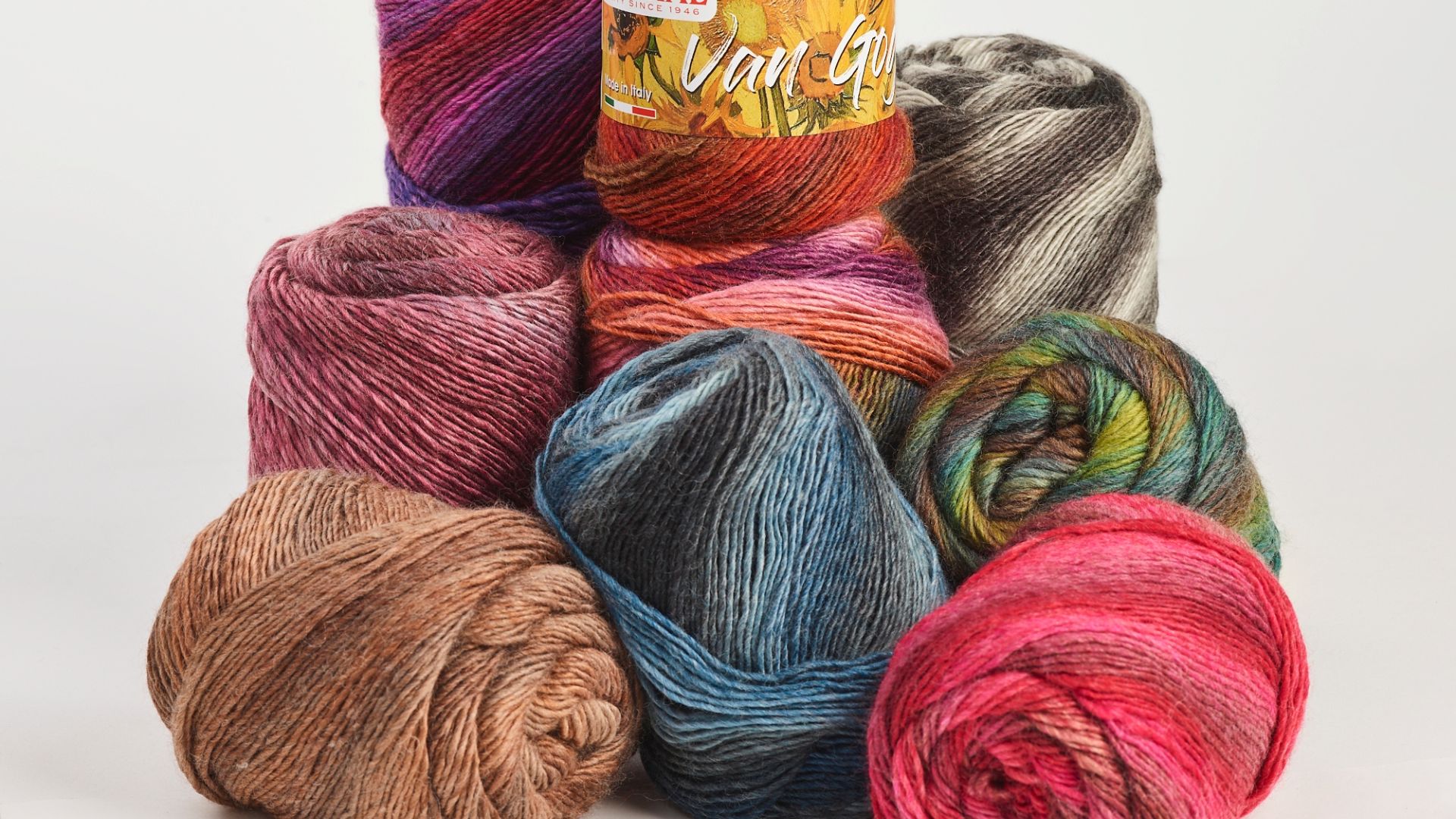
Discover The Perfect Yarn At Spotlight
You can find all sorts of beautiful yarn in the range at Spotlight! If you're shopping online you can pay your way and we'll deliver your yarn straight to your front door. Otherwise, visit your nearest Spotlight store and our friendly team will help you find the right yarn, knitting needles and crochet hooks for your next needle project.
For more information on needles and hooks, read our buying guide online for heaps of handy information! And for more fun needle art ideas and inspiration, check out our blogs on how to knit for beginners, the Caron Ogo yarn range and our chat with Fallon from Teacup Crochet Designs.




